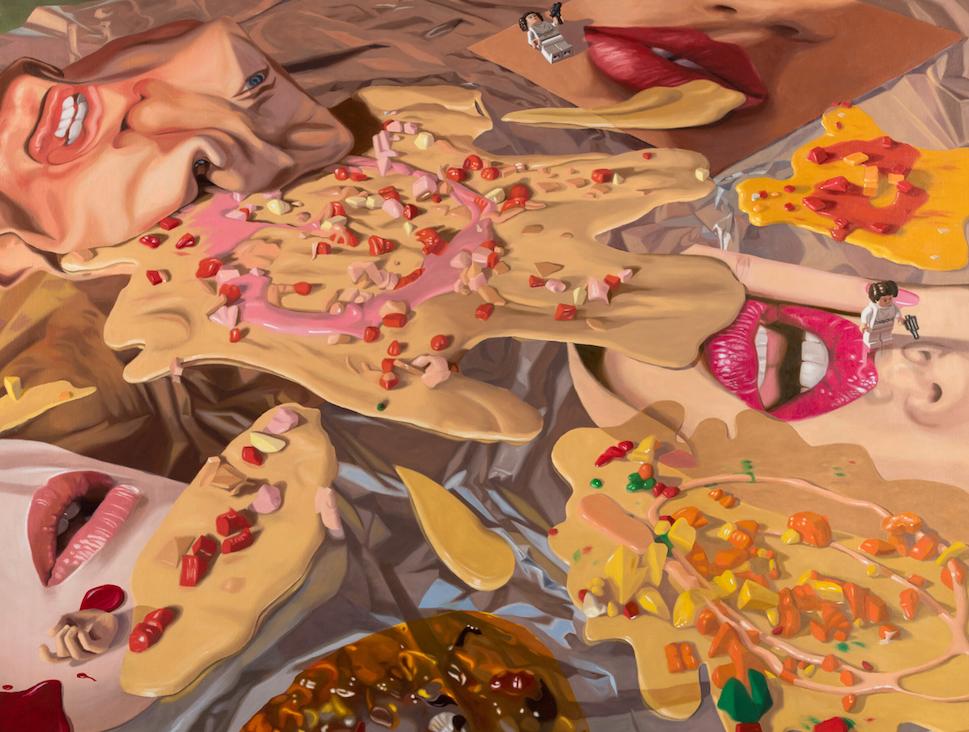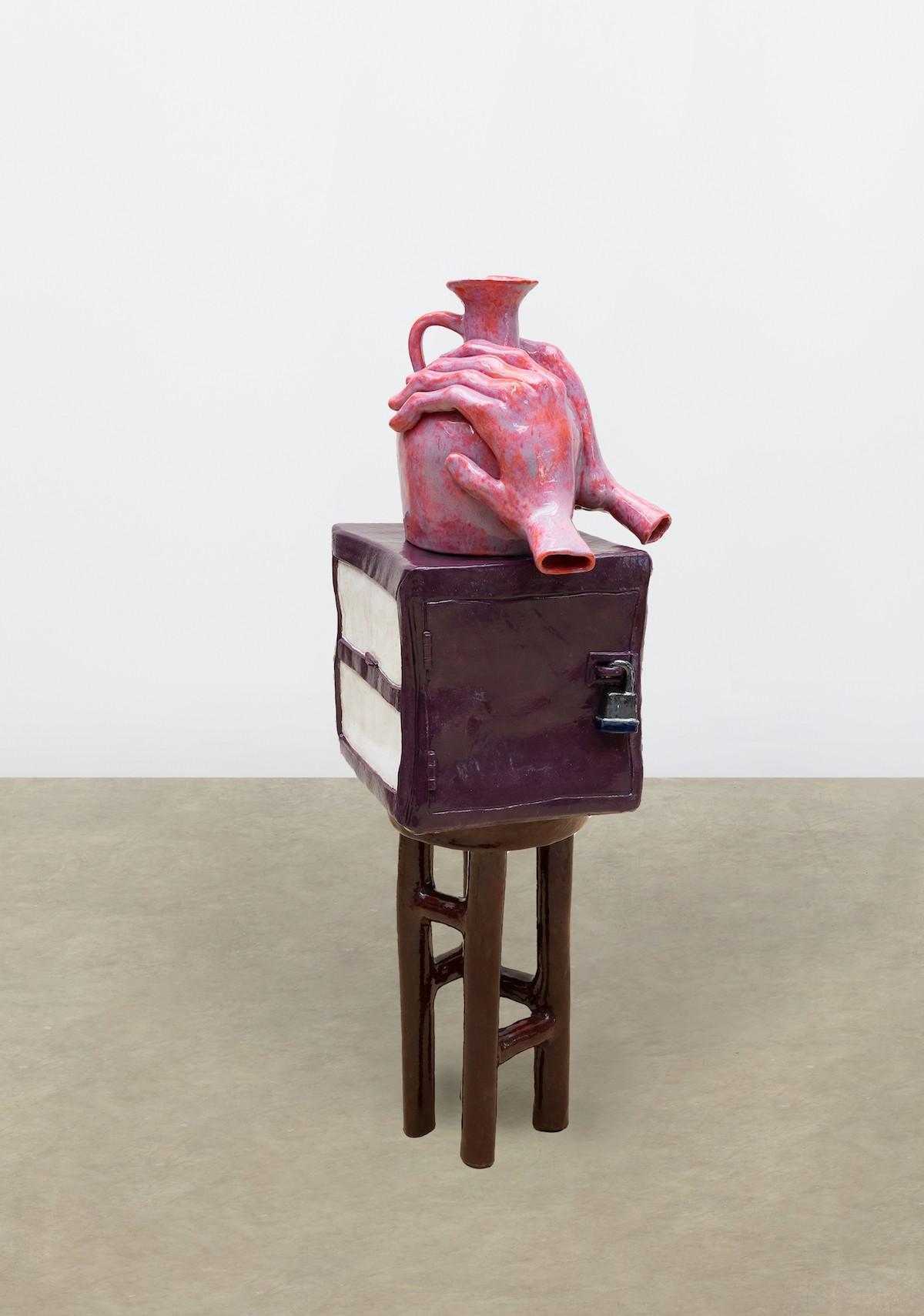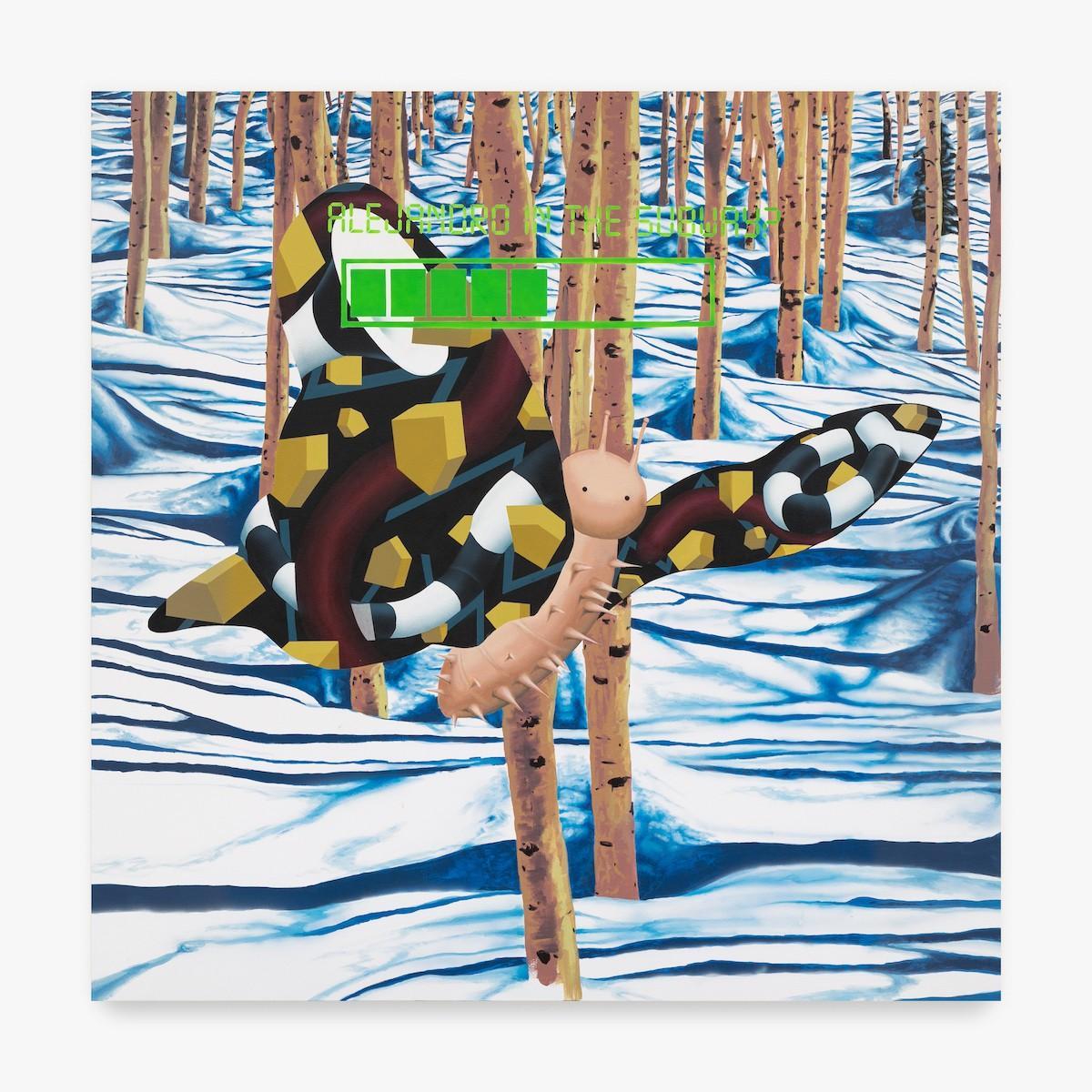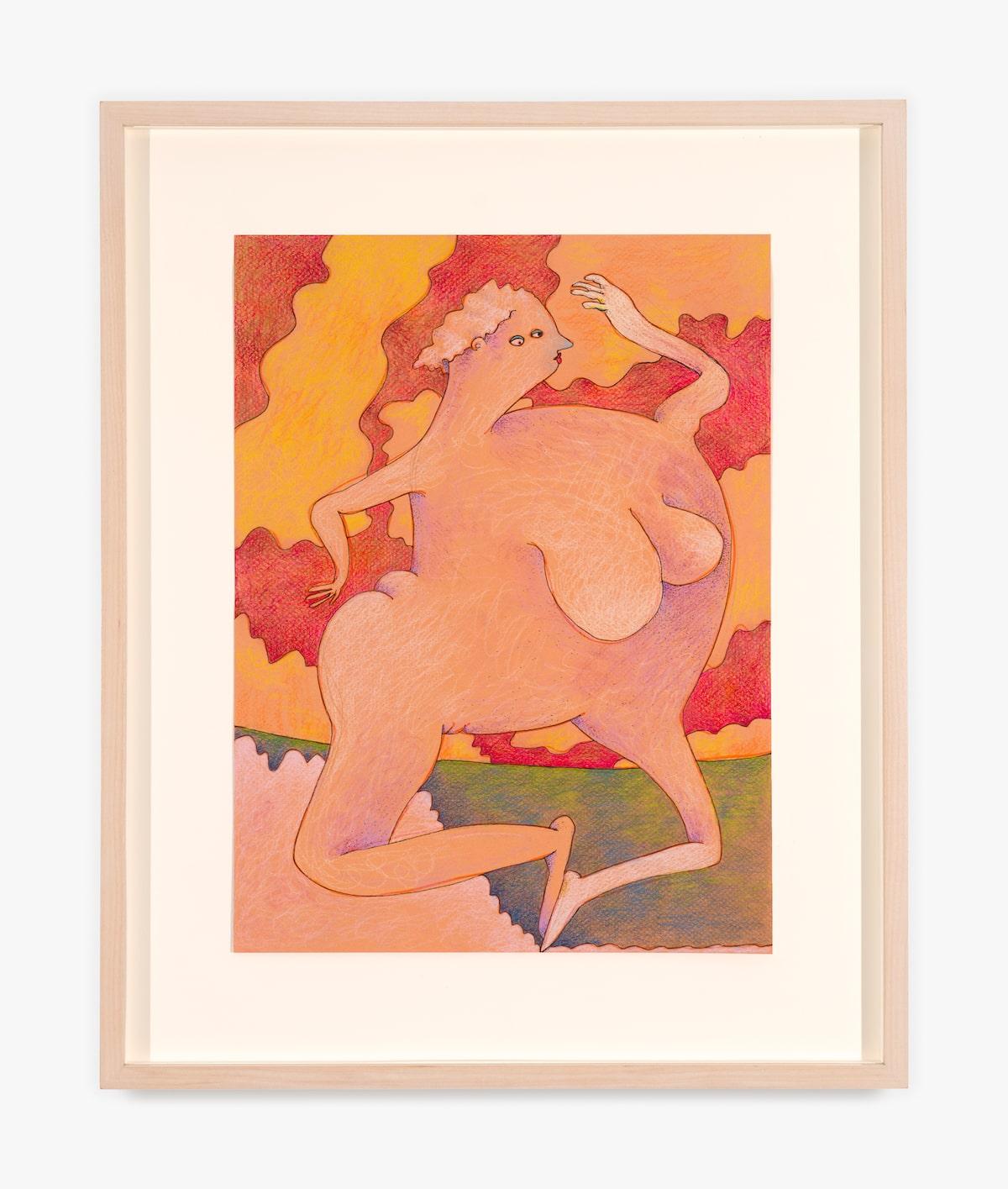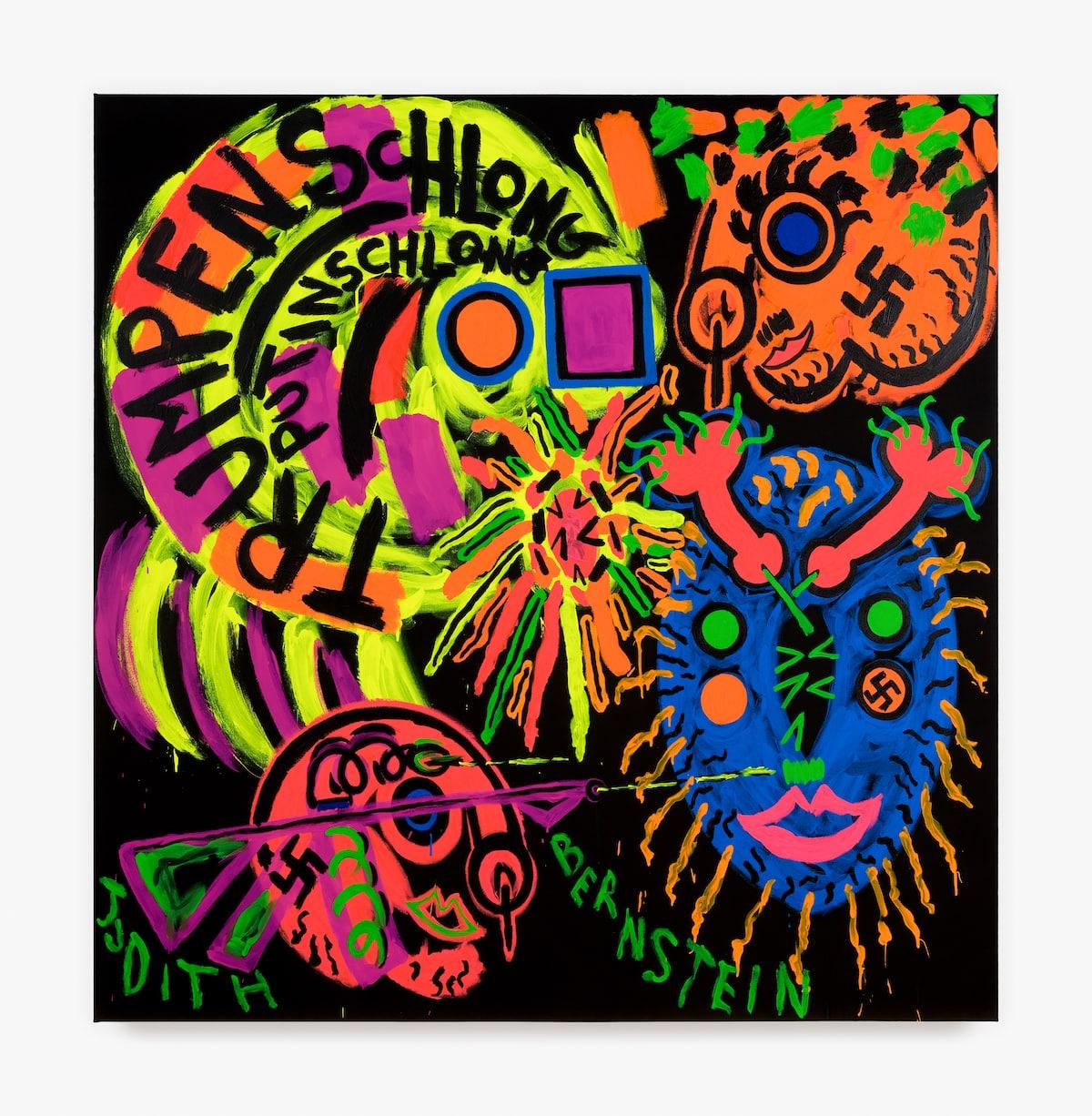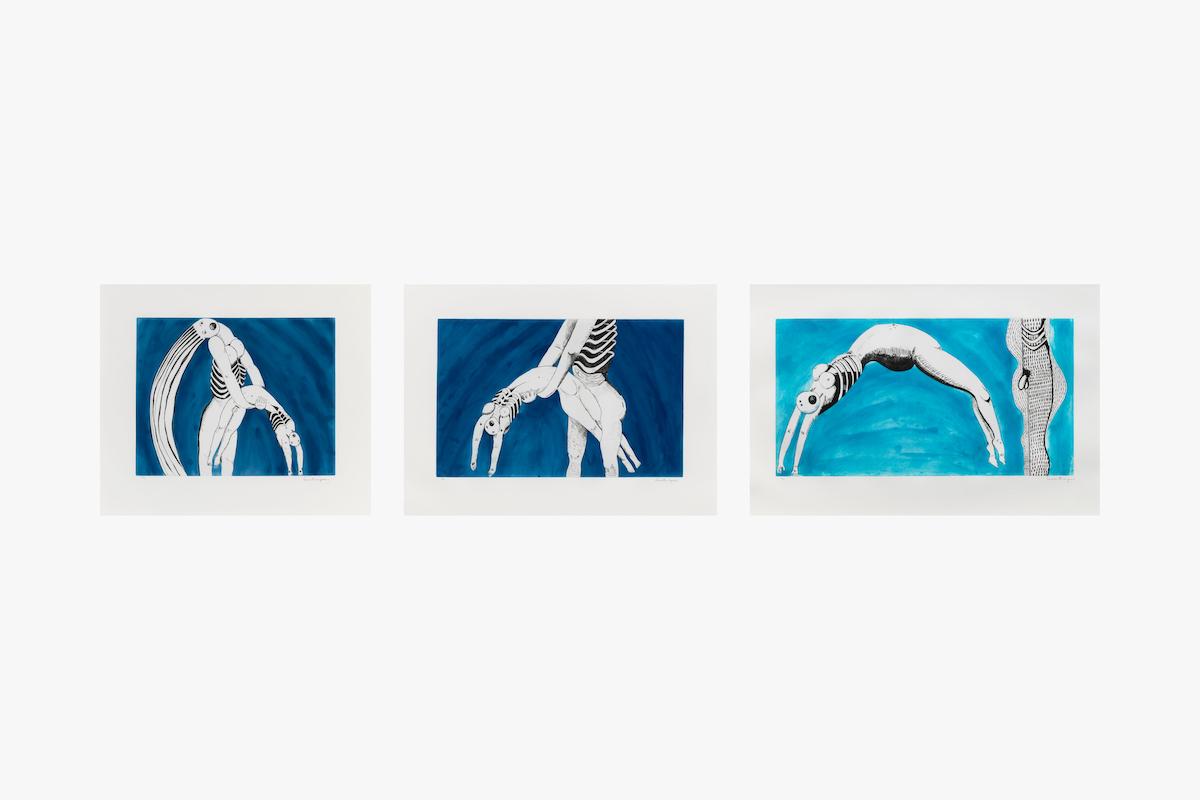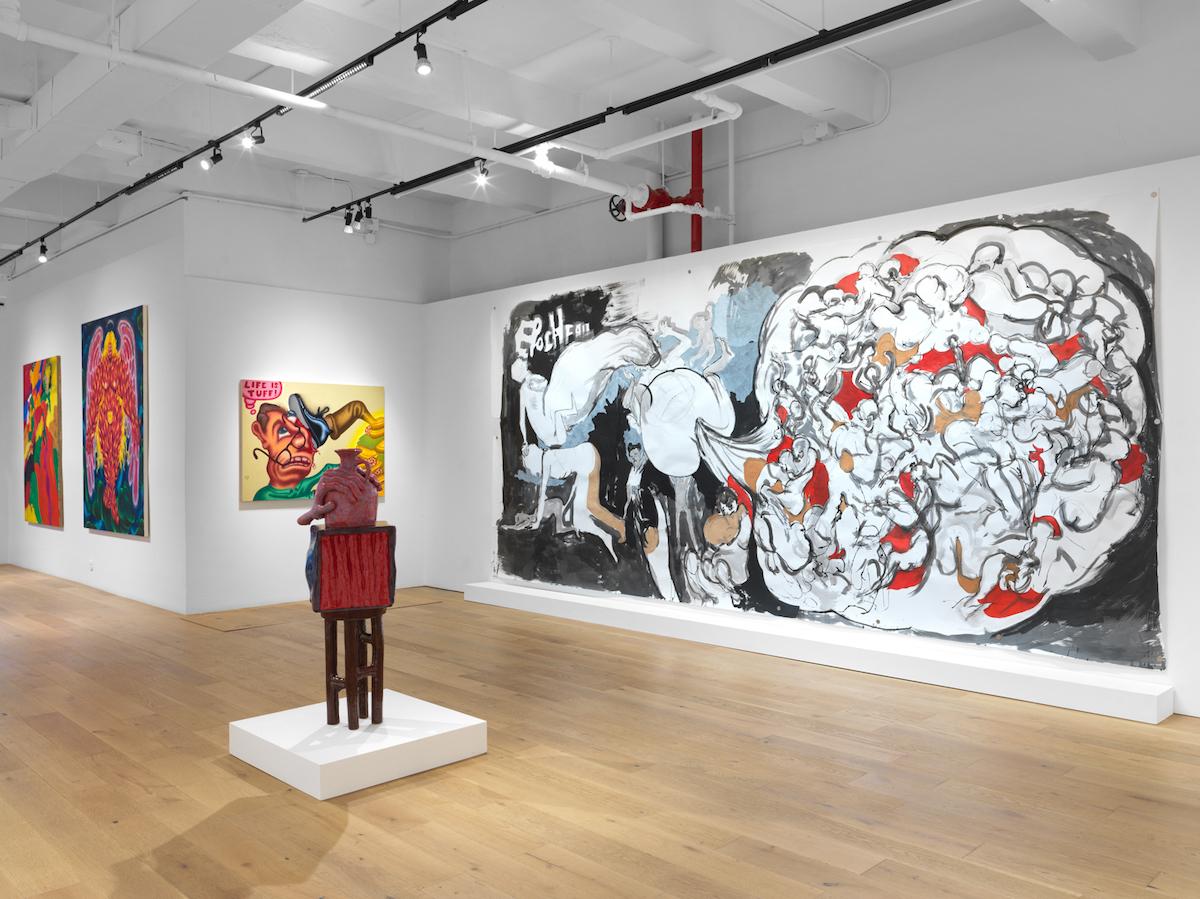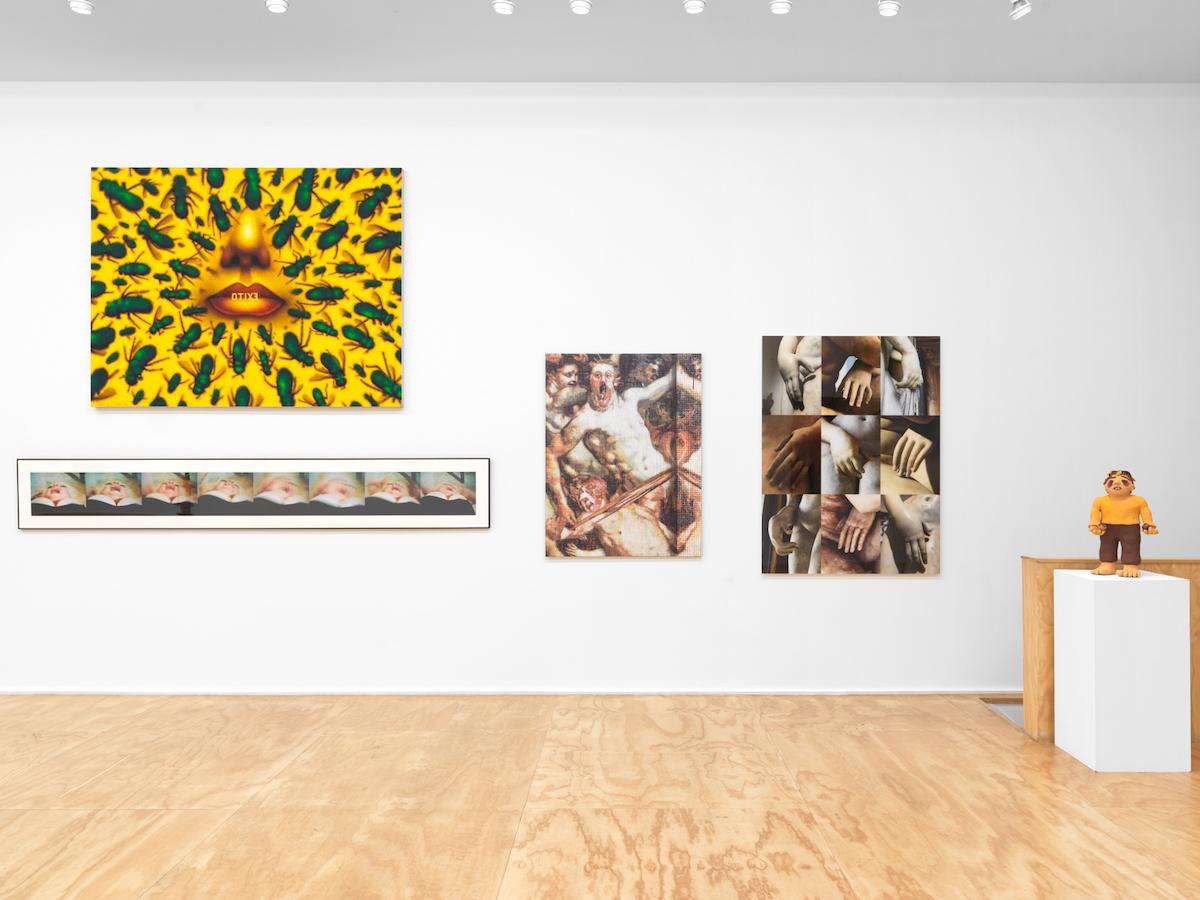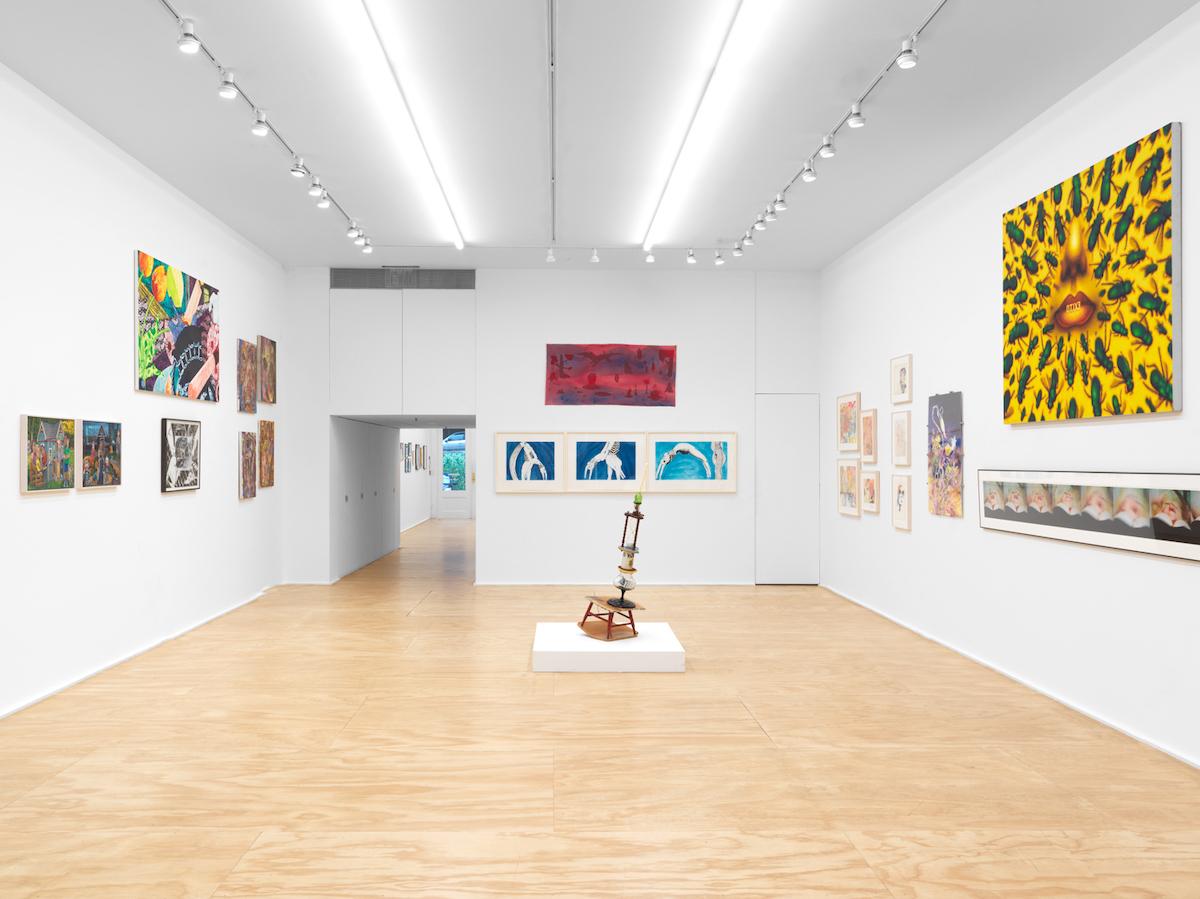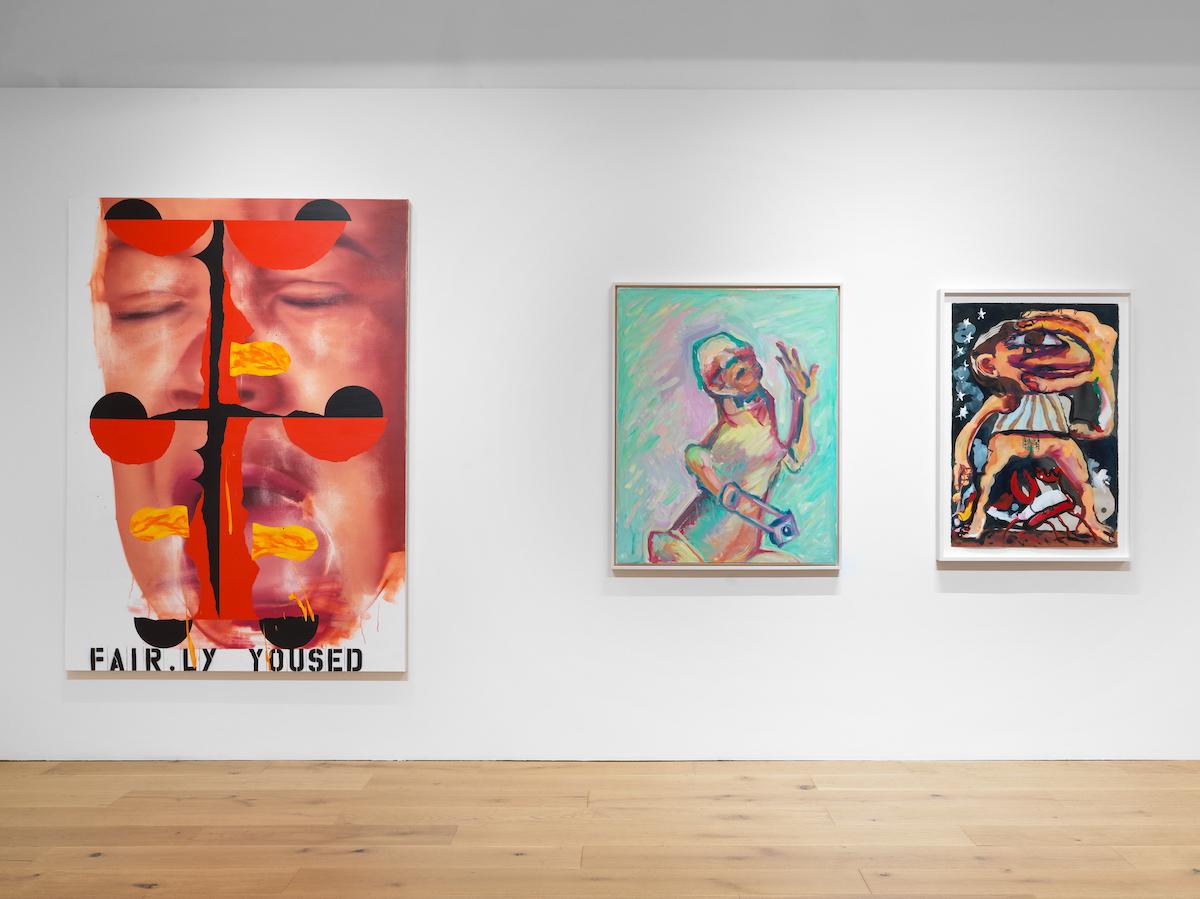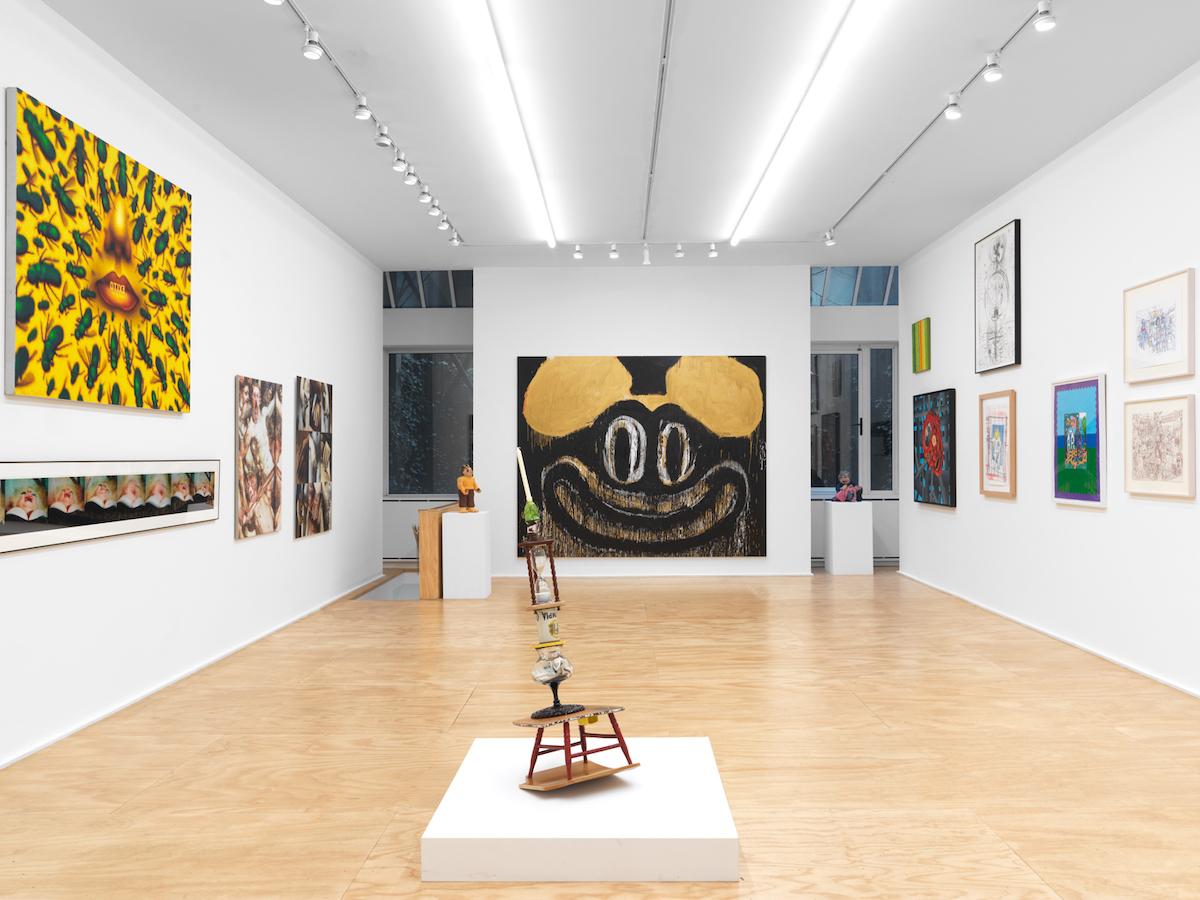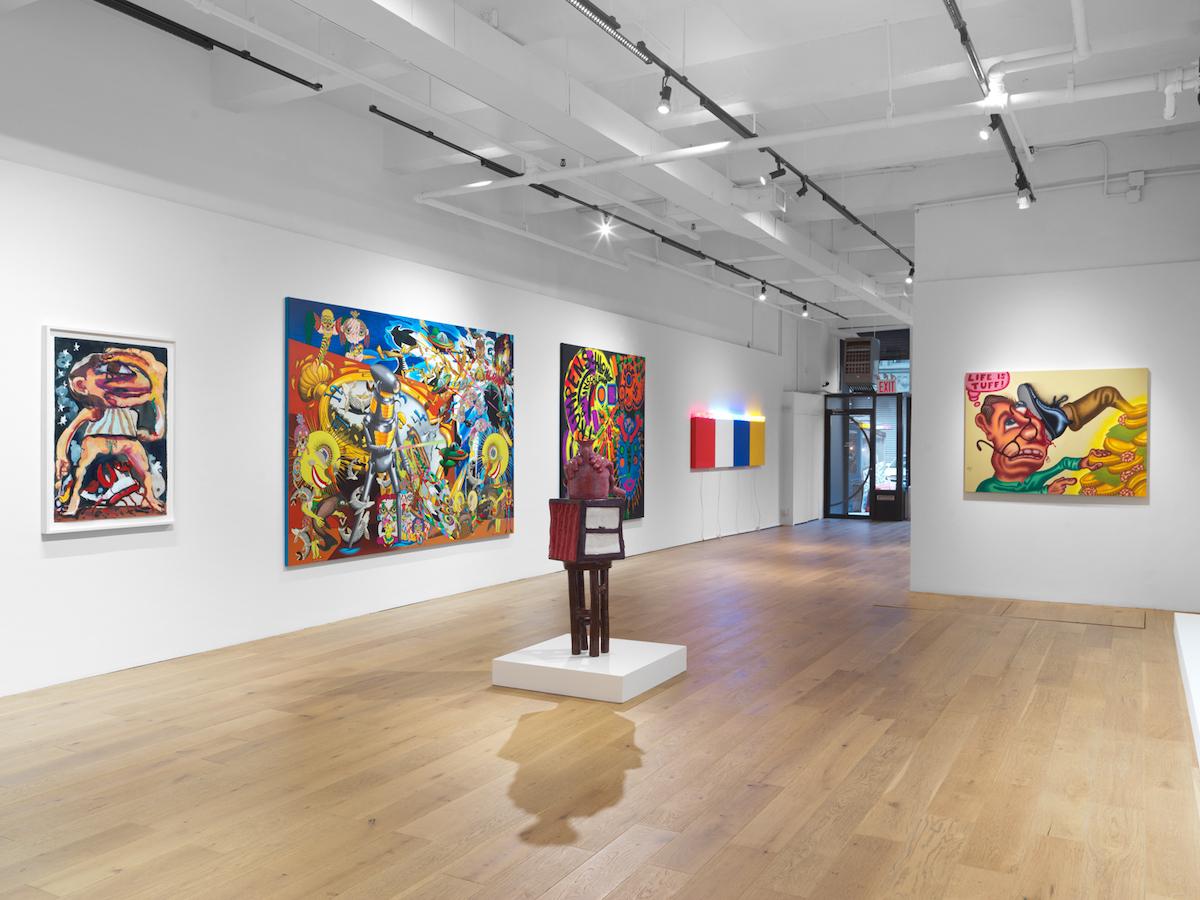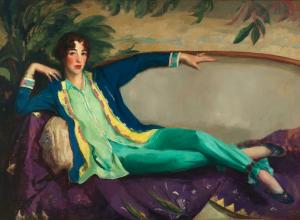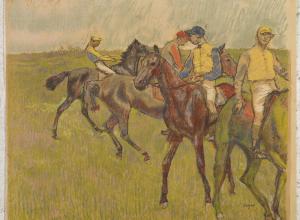With the political, social and cultural upheavals of the past 20 years as well as the rising impact of climate change, artists working today have not stopped visually responding to and grappling with all that we have endured—in fact, if anything, artists have become even more visually responsive in recent years. Retinal Hysteria, the current exhibition up at the gallery Venus Over Manhattan, speaks to these visual anxieties with works by over 40 artists. Some artists are of the original set including Robert Crumb and Peter Saul, but many are new names, blending the young contemporary artists like Woody De Othello, Jamian Juliano-Villani, Chibuike Uzoma, Ana Benaroya, and Julia Jacquette, with the more established names like Raymond Pettibon, Deborah Kass, George Condo, Maria Lassnig, and the legendary Louise Bourgeois. The artists all share what Storr, who is the show’s curator, terms, a “disorienting intensity.” Set between the gallery’s two spaces, the exhibition revisits the ideas presented in Braun’s Eye Infection through a contemporary lens.
Art & Object spoke to Storr, who was formerly Dean of the Yale School of Art and senior curator in the Department of Painting and Sculpture at the Museum of Modern Art. Storr gave us the inside scoop into his ideas and motivations behind Retinal Hysteria.




